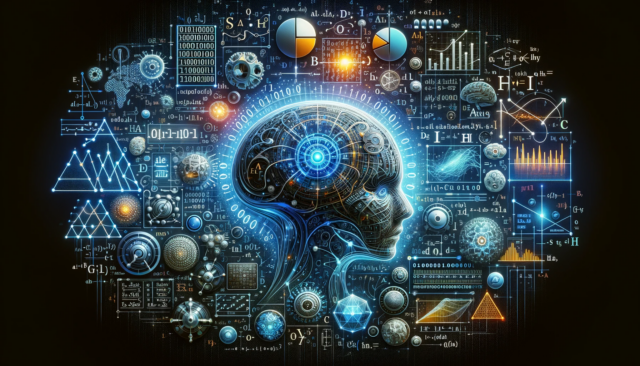Mathematics: The Essential Foundation of Artificial Intelligence
Artificial intelligence (AI) has become an integral part of modern technological innovation, revolutionizing industries and permeating aspects of our daily lives. The impressive capabilities of AI systems in natural language processing, image recognition, strategy games, and medical diagnostics mask the intricate mathematical framework that underpins their functionality. This article delves into the profound role of mathematics in the development and advancement of artificial intelligence.
Key Mathematical Pillars
- Algorithms: Algorithms serve as the meticulously crafted blueprints for problem-solving in AI systems. They encompass diverse mathematical concepts to ensure efficiency and accuracy in task execution.
- Probability and Statistics: AI thrives on handling the inherent uncertainty and variability of real-world data. Probability and statistics provide the tools for pattern recognition, trend identification, and informed decision-making based on raw input.
- Linear Algebra: This mathematical domain centers on vectors, matrices, and systems of linear equations. Linear algebra offers AI crucial mechanisms for representing and manipulating multidimensional datasets, vital in deep learning and computer vision.
- Calculus: Calculus investigates rates of change, contributing significantly to the optimization of AI models. Gradient descent, a calculus-based technique widely employed in training neural networks, exemplifies this utility.
Mathematics in Action: AI Transformations
-
Machine Learning: AI’s ability to learn and adapt without explicit programming stems from machine learning. Statistical models, decision trees, and neural networks employ mathematical principles to discover patterns within data, generating predictions and classifications.
-
Optimization: The pursuit of enhanced efficacy and precision motivates the use of optimization algorithms in AI. Mathematical theory underpins the search for optimal solutions across expansive problem spaces.
-
Data Representation: Mathematical representation critically influences the outcomes of AI algorithms. Linear algebra enables applications handling images, videos, text, and other high-dimensional data. An image, for instance, can be expressed as a matrix of pixel values for processing by image recognition algorithms.
The Future of the AI-Mathematics Symbiosis
The dynamic interplay between mathematics and AI holds the key to increasingly sophisticated AI applications. Let’s explore potential growth areas:
- Explainable AI (XAI): The development of mathematically rigorous XAI methods will improve our understanding of AI model decision-making, fostering transparency and trust in AI systems.
- AI for Scientific Discovery: Powered by mathematics, AI can expedite scientific breakthroughs, from the discovery of new mathematical proofs to the simulation of complex biological and physical systems.
Conclusion
Mathematics provides the language, logic, and tools that enable AI to process information and evolve its capabilities. As AI continues to transform diverse industries and shape our future, understanding its mathematical foundations becomes invaluable. The next time you engage with an AI-powered recommendation system or witness an autonomous vehicle in action, consider the profound role of mathematics in driving these advancements.
References
- Goodfellow, I., Bengio, Y., & Courville, A. (2016). Deep learning. MIT press.
- Russell, S. J., & Norvig, P. (2016). Artificial intelligence: a modern approach (3rd ed.). Pearson Education Limited.
- Walpole, R. E., Myers, R. H., Myers, S. L., & Ye, K. (2012). Probability & statistics for engineers & scientists (9th ed.). Boston: Prentice Hall.




